Seasonal Planting Calendar: Zone-by-Zone Guide to Growing Food
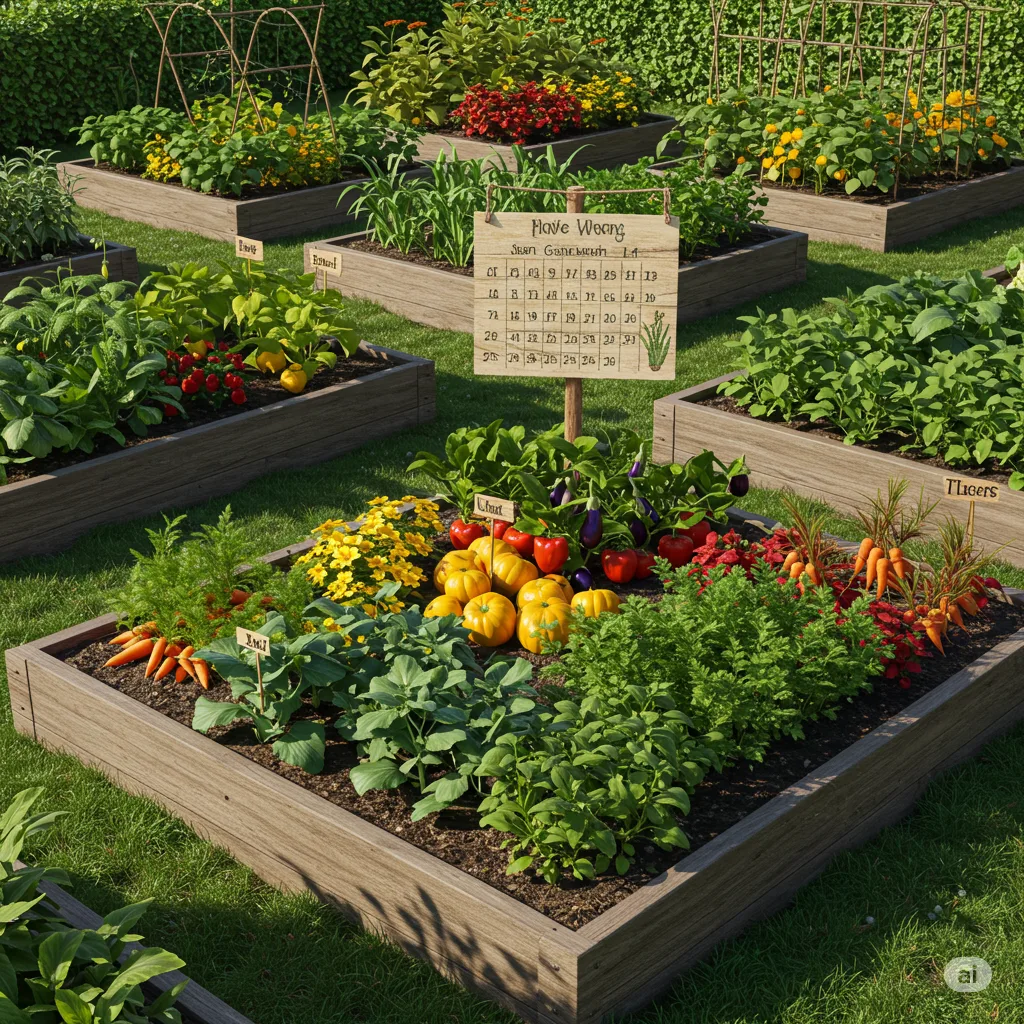
Our comprehensive zone-by-zone planting calendar helps you know exactly when to plant for maximum harvest
Last Updated: May 15, 2025
Growing your own food is one of the most rewarding sustainable practices you can adopt. Not only does it reduce your carbon footprint and grocery bills, but it also connects you intimately with your food source. However, successful home gardening requires understanding when to plant what in your specific climate zone. This comprehensive seasonal planting calendar will walk you through exactly what to plant each season based on your USDA hardiness zone.
Table of Contents
- Understanding Hardiness Zones
- Spring Planting Guide
- Summer Planting Guide
- Fall Planting Guide
- Winter Planting Guide
- Zone-Specific Planting Calendars
- Extending Your Growing Season
- Companion Planting for Maximum Yield
- Sustainable Pest Management by Season
- Frequently Asked Questions
Understanding Hardiness Zones
Before diving into what to plant when, it’s essential to know your hardiness zone, which determines which plants can thrive in your area.
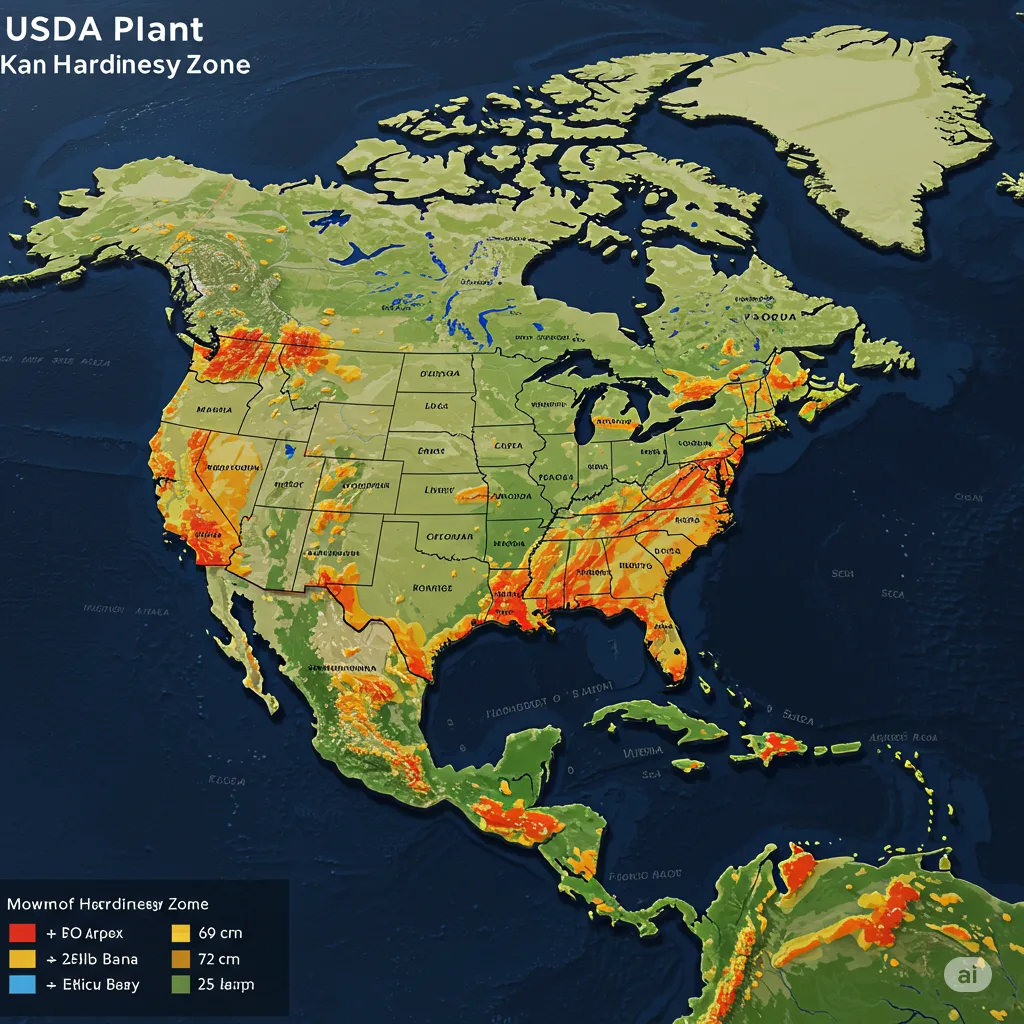
Find your USDA hardiness zone to determine optimal planting times for your region
The USDA Hardiness Zone Map divides North America into 13 zones based on average annual minimum winter temperatures. Each zone differs by 10°F, with further subdivision into “a” and “b” sections representing 5°F differences.
How to Find Your Zone:
- Visit the USDA Plant Hardiness Zone Map
- Enter your ZIP code
- Note your zone number and letter (for example, Zone 7b)
Understanding your zone is crucial because it determines:
- When your last and first frost dates typically occur
- Which plants can survive year-round in your area
- The optimal planting windows for various crops
Pro Tip: Local microclimates can create variations within a hardiness zone. Factors like urban heat islands, proximity to bodies of water, elevation, and landscape features can create warmer or cooler pockets within your zone.
Spring Planting Guide
Spring is the season of renewal and the busiest planting time for most gardeners. Here’s what to plant as the soil warms.
Early Spring (As Soon as Soil Can Be Worked)
These cold-hardy plants can go in the ground as soon as the soil is workable, even if light frosts are still possible:
| Vegetable | Days to Maturity | Notes |
|---|---|---|
| Peas | 50-70 | Direct sow; prefers cool weather |
| Spinach | 35-45 | Bolt-resistant varieties for longer harvest |
| Radishes | 21-30 | Quick-growing; ideal for succession planting |
| Lettuce | 45-55 | Choose loose-leaf varieties for continual harvest |
| Kale | 50-65 | Frost improves flavor |
| Carrots | 60-80 | Direct sow; needs loose soil |
| Beets | 50-70 | Entire plant is edible |
| Onions | 90-110 | Plant sets or seedlings |
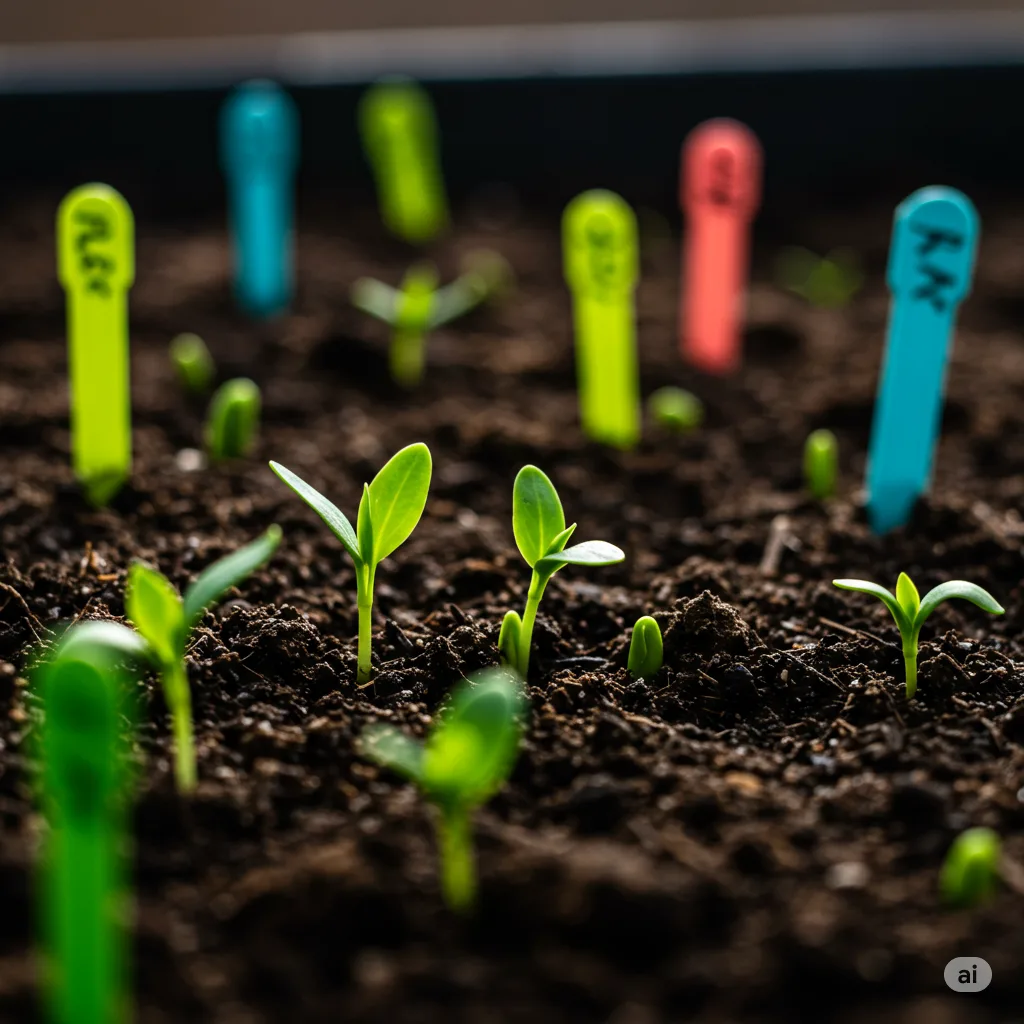
Cold-hardy crops like peas, spinach and radishes can be planted as soon as soil is workable in spring
Mid-Spring (After Last Frost Date)
Plant these crops after your zone’s last frost date:
| Vegetable | Days to Maturity | Notes |
|---|---|---|
| Tomatoes | 70-100 | Transplant seedlings |
| Beans | 50-65 | Direct sow when soil is warm |
| Cucumbers | 50-70 | Needs warm soil and full sun |
| Summer Squash | 40-55 | Direct sow or transplant |
| Peppers | 60-90 | Transplant after soil warms |
| Herbs (basil, dill, cilantro) | Varies | Most prefer warm soil |
Zone-Specific Spring Planting Tip: Zones 3-5 might need to wait until late May for warm-season crops, while zones 8-10 can often plant these in February or March.
Summer Planting Guide
Summer is about maintaining spring plantings and starting fall crops. It’s also the perfect time for succession planting to ensure continuous harvests.
Early Summer
| Vegetable | Days to Maturity | Notes |
|---|---|---|
| Corn | 60-100 | Plant in blocks for pollination |
| Melons | 70-100 | Needs hot weather and space |
| Sweet Potatoes | 90-120 | Slips planted after soil warms to 65°F |
| Okra | 50-65 | Thrives in hot weather |
| Eggplant | 60-80 | Transplant when nights are warm |
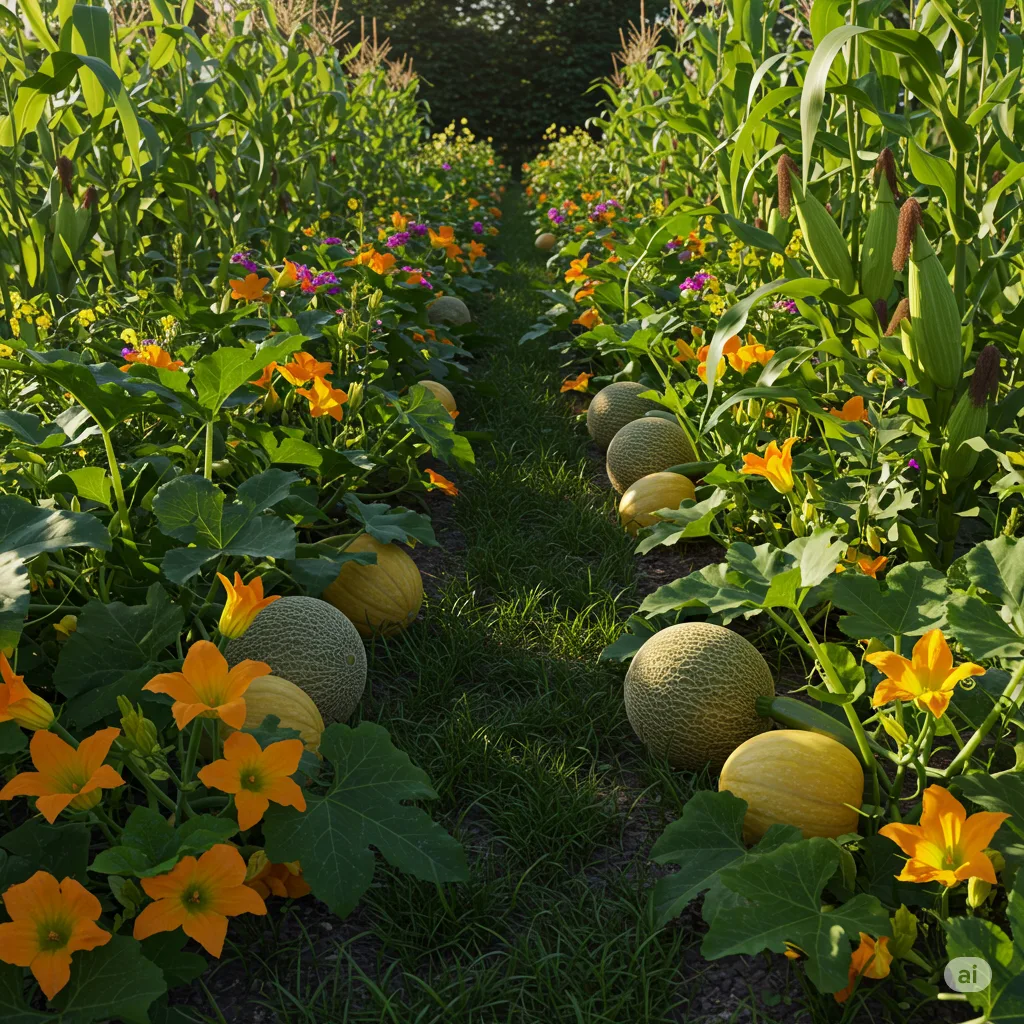
Summer gardens thrive with heat-loving crops like corn, melons, and sweet potatoes
Late Summer
Start planting these fall crops in late summer:
| Vegetable | Days to Maturity | Notes |
|---|---|---|
| Kale (fall crop) | 50-65 | Direct sow for fall/winter harvest |
| Brussels Sprouts | 90-180 | Transplant for fall harvest |
| Broccoli (fall crop) | 60-85 | Transplant 10-12 weeks before first frost |
| Carrots (fall crop) | 60-80 | Direct sow for sweeter winter harvest |
| Cabbage | 60-105 | Transplant for fall harvest |
Zone-Specific Summer Planting Tip: In zones 7-10, use shade cloth to protect cool-season fall crops during hot summer establishment. In zones 2-4, choose ultra-fast maturing varieties for fall crops.
Fall Planting Guide
Fall isn’t just harvest season—it’s also the time to plant garlic, cover crops, and in milder zones, a variety of cool-season vegetables.
Early-Mid Fall
| Vegetable | Days to Maturity | Notes |
|---|---|---|
| Garlic | 240-300 | Plant cloves in fall for summer harvest |
| Onion seeds | Overwinter | In zones 7+ for next year’s harvest |
| Spinach | 35-45 | Can overwinter in zones 6+ |
| Mâche/Corn Salad | 50-60 | Very cold-hardy |
| Radishes | 21-30 | Cold-tolerant for fall harvest |
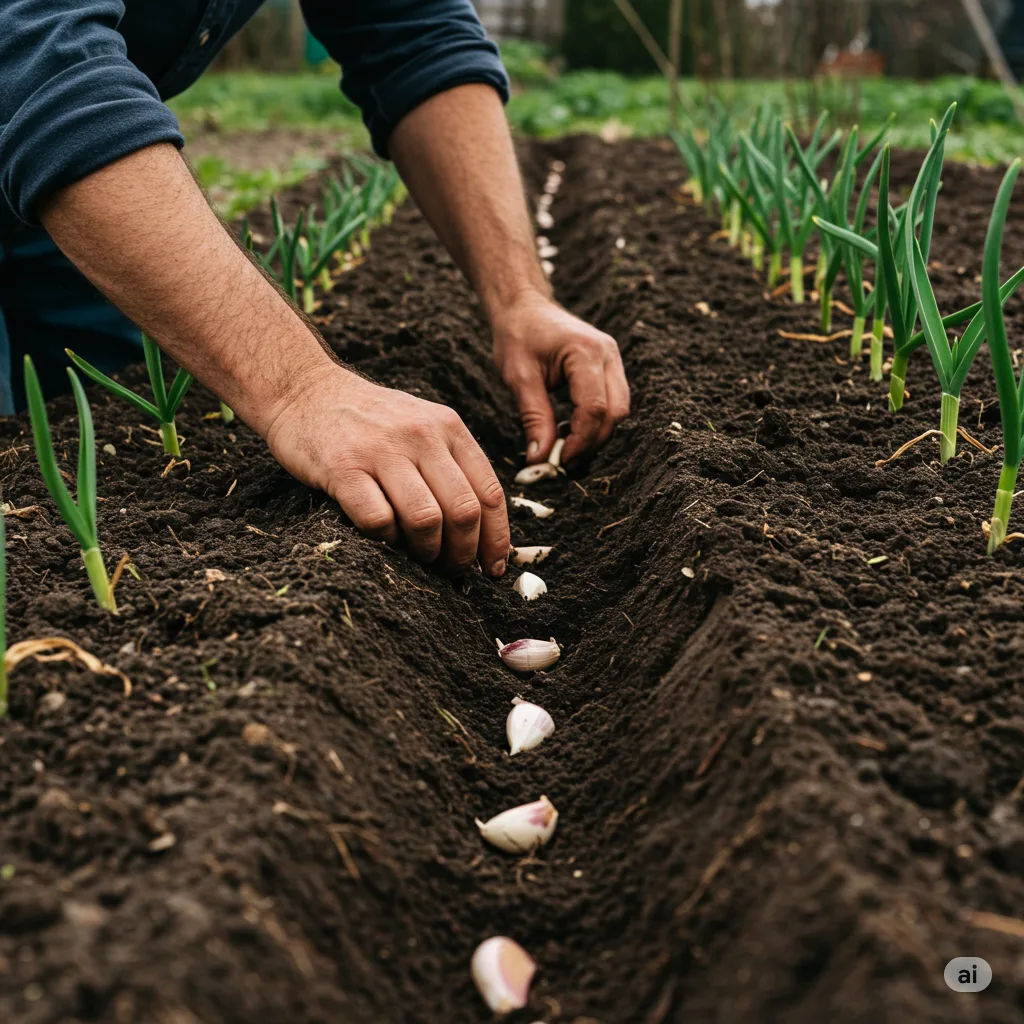
Planting garlic cloves in fall ensures a robust summer harvest
Late Fall
| Garden Task | Purpose | Notes |
|---|---|---|
| Cover crops | Soil building | Plant before first hard freeze |
| Broad beans/Fava beans | Nitrogen fixing | Overwinter in zones 6+ |
| Shallots | Spring harvest | Plant like garlic in fall |
| Fruit trees & bushes | Establishment | Fall is ideal for planting woody perennials |
Zone-Specific Fall Planting Tip: In zones 8-10, fall is like a second spring—plant a full range of cool-season crops for winter harvest. In zones 3-5, focus on garlic, extremely hardy greens, and soil preparation.
Winter Planting Guide
Winter gardening varies dramatically by zone—from complete dormancy to active growing seasons.
Zones 3-6 Winter Activities
| Activity | Purpose | Notes |
|---|---|---|
| Seed starting | Spring preparation | Start seeds indoors 6-8 weeks before last frost |
| Microgreens | Indoor harvest | Grow on windowsills for fresh greens |
| Sprouts | Quick harvest | No soil needed, ready in days |
| Planning | Garden design | Review last year’s notes, order seeds |
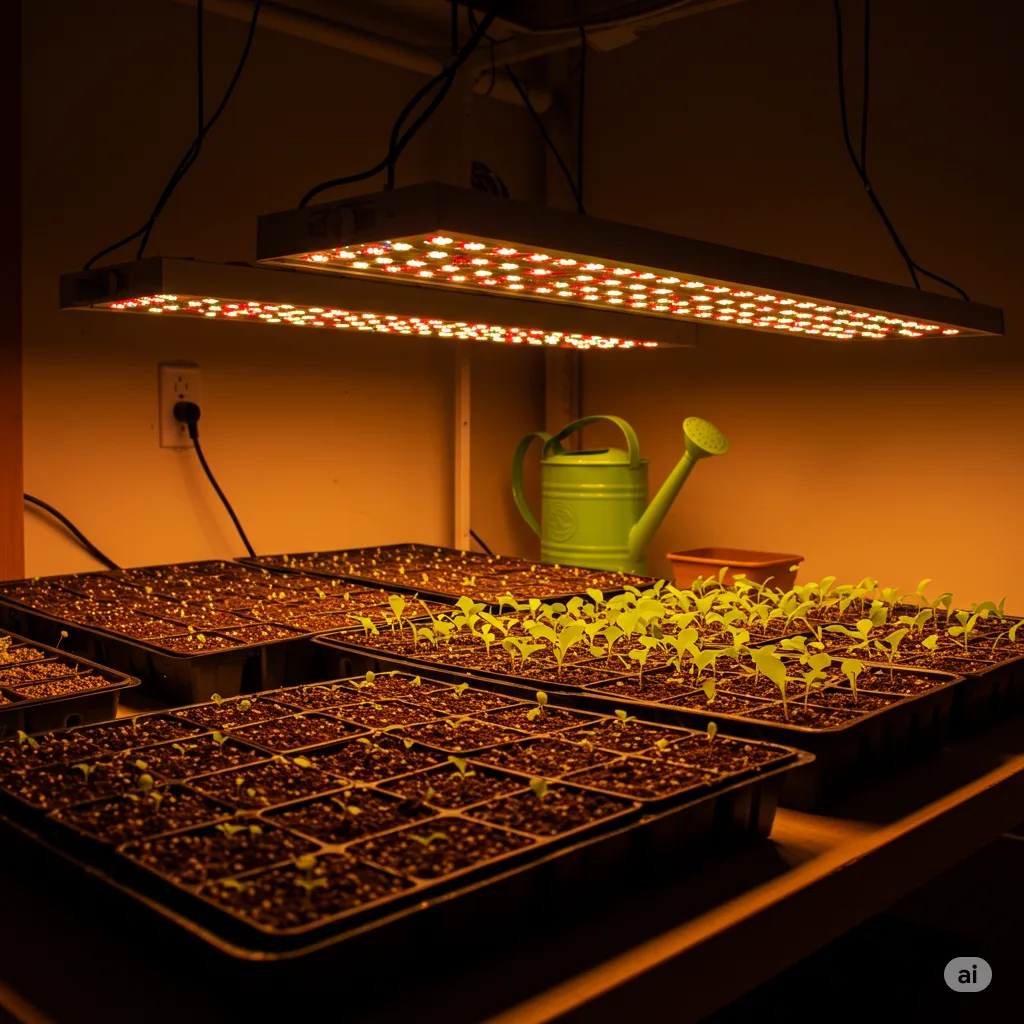
Prepare for spring by starting seeds indoors during winter in colder zones
Zones 7-10 Winter Planting
| Vegetable | Days to Maturity | Notes |
|---|---|---|
| Peas | 50-70 | Plant mid-to-late winter |
| Lettuces | 45-55 | Plant throughout winter |
| Root vegetables | 50-70 | Beets, carrots, turnips do well |
| Brassicas | 60-90 | Broccoli, cauliflower transplants |
| Potatoes | 70-120 | Plant late winter in zones 8-10 |
Zone-Specific Winter Planting Tip: In zones 9-10, winter is prime growing season for most cool-season crops. In zones 7-8, use row covers or cold frames to extend the season.
Zone-Specific Planting Calendars
Below are simplified planting calendars for each major zone group. For specific planting dates, adjust based on your local last and first frost dates.
Zones 2-3 (Last frost: Late May-June; First frost: Aug-Sept)
| Month | What to Plant | Notes |
|---|---|---|
| January-March | Nothing outdoors | Start onions, leeks indoors |
| April | Indoor seedlings | Start tomatoes, peppers, etc. |
| May | Cold-hardy crops | Peas, spinach, radish after thaw |
| June | Warm-season crops | After last frost date |
| July | Fall crops | Fast-maturing varieties |
| August | Cover crops | Prepare for winter |
| September-December | Garlic only | Plant before ground freeze |
Zones 4-5 (Last frost: April-May; First frost: Sept-Oct)
| Month | What to Plant | Notes |
|---|---|---|
| January-February | Indoor seedlings | Onions, leeks, brassicas |
| March | More indoor starts | Tomatoes, peppers, eggplant |
| April | Cold-hardy crops | Direct sow after soil can be worked |
| May | Warm-season crops | After last frost date |
| June-July | Succession plantings | Fall crops like brassicas |
| August | Fast-maturing crops | Lettuce, spinach, radishes |
| September | Cover crops, garlic | Before ground freezes |
| October-December | Planning only | Soil amendments |
Zones 6-7 (Last frost: March-April; First frost: Oct-Nov)
| Month | What to Plant | Notes |
|---|---|---|
| January | Indoor seedlings | Early brassicas, onions |
| February | Indoor seedlings | Tomatoes, peppers, etc. |
| March | Cold-hardy crops | Peas, spinach, lettuce |
| April | Most vegetables | Main planting season |
| May-July | Warm-season crops | Succession plantings |
| August-September | Fall crops | Second cool season |
| October | Garlic, cover crops | Spring preparations |
| November-December | Overwinter crops | With protection in zone 7 |
Zones 8-10 (Last frost: Jan-Feb/None; First frost: Nov-Dec/None)
| Month | What to Plant | Notes |
|---|---|---|
| January-February | Cool-season crops | Main planting time for spring |
| March-April | Warm-season crops | Main summer crop planting |
| May-August | Heat-tolerant only | Okra, sweet potatoes, etc. |
| September-October | Fall garden | Second major planting season |
| November-December | Cool-season crops | For winter/spring harvest |
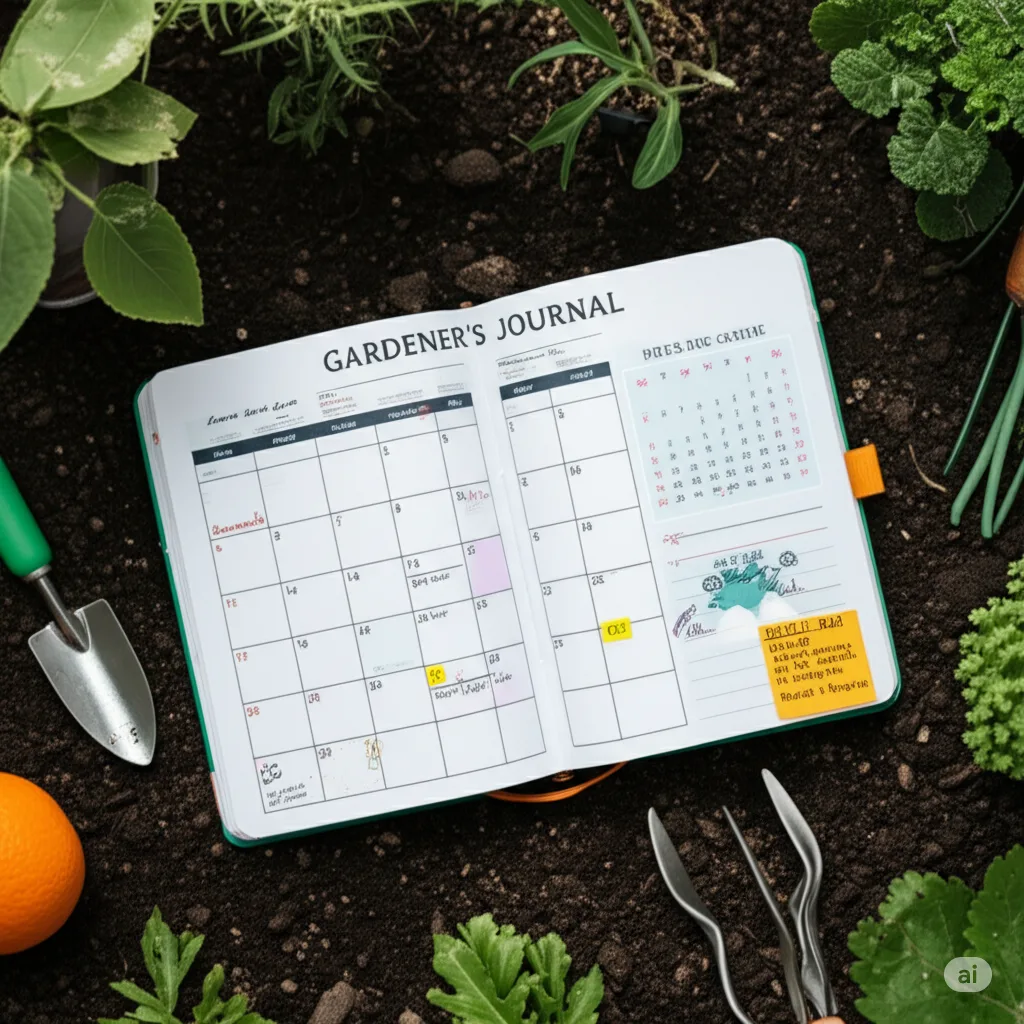
Keep track of your seasonal planting calendar with a detailed garden journal
Extending Your Growing Season
No matter your zone, these techniques can help you start earlier and harvest later:
Season Extension Tools
| Method | Temperature Boost | Best For |
|---|---|---|
| Row covers | 2-4°F | Direct-sown seeds, young seedlings |
| Cold frames | 5-10°F | Hardy greens, season extension |
| Hoop houses | 10-15°F | Extending fall/spring seasons |
| Greenhouses | 15-30°F | Year-round growing in most zones |
| Mulch | 2-5°F | Root protection in winter |
| Water walls | 5-10°F | Tomatoes, peppers, early planting |
Pro Tip: Combine methods for maximum protection. For example, using row covers inside a cold frame can create a microclimate several zones warmer than your actual zone.
Companion Planting for Maximum Yield
Strategic companion planting can improve growth, deter pests, and maximize space in your seasonal garden.
Spring Companions
| Main Crop | Beneficial Companions | Why It Works |
|---|---|---|
| Peas | Carrots, radishes, spinach | Different root depths utilize space efficiently |
| Lettuce | Strawberries, radishes | Lettuce provides shade for strawberry roots |
| Cabbage family | Aromatic herbs | Herbs mask scent from cabbage moths |
Summer Companions
| Main Crop | Beneficial Companions | Why It Works |
|---|---|---|
| Tomatoes | Basil, marigolds | Pest deterrence, flavor enhancement |
| Corn | Beans, squash | The “Three Sisters” method: beans fix nitrogen, corn provides support, squash suppresses weeds |
| Cucumbers | Sunflowers, nasturtiums | Sunflowers provide shade, nasturtiums repel pests |
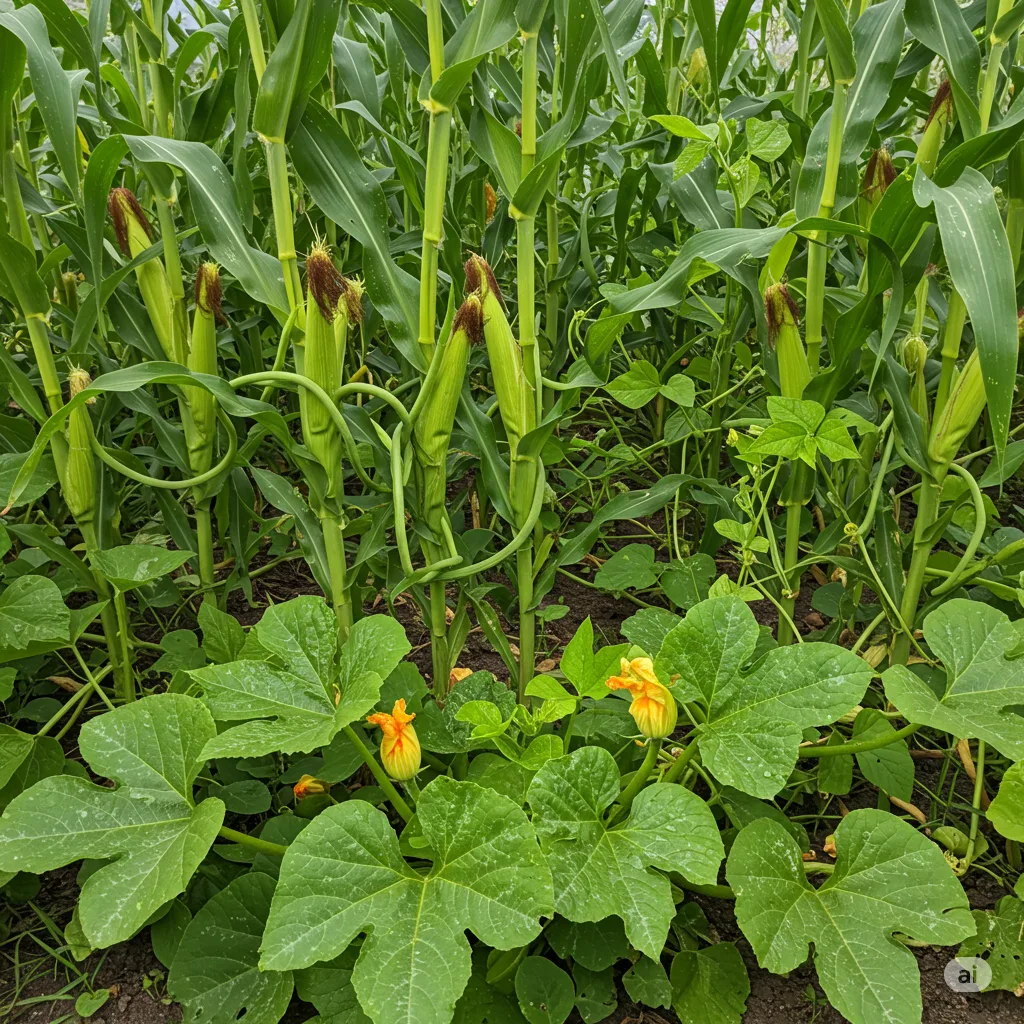
The Three Sisters method demonstrates effective companion planting for summer crops
Fall/Winter Companions
| Main Crop | Beneficial Companions | Why It Works |
|---|---|---|
| Garlic | Strawberries | Garlic deters pests from strawberries |
| Kale | Aromatic herbs | Herbs confuse kale-seeking pests |
| Cover crops | Fall-planted fruit trees | Cover crops protect soil while trees establish |
Sustainable Pest Management by Season
Each season brings different pest challenges. Here’s how to manage them naturally with a sustainable pest management approach:
Spring Pest Management
| Pest | Natural Control | Preventative Measures |
|---|---|---|
| Slugs | Diatomaceous earth, copper tape | Remove hiding places, morning watering |
| Aphids | Insecticidal soap, ladybugs | Silver mulch, companion plants |
| Cutworms | Cardboard collars | Fall soil turning, delayed planting |
Summer Pest Management
| Pest | Natural Control | Preventative Measures |
|---|---|---|
| Tomato hornworms | Hand-picking, parasitic wasps | Companion planting with dill, borage |
| Squash bugs | Trap crops, hand-picking | Row covers until flowering, crop rotation |
| Cucumber beetles | Yellow sticky traps | Delayed planting, row covers |
Fall/Winter Pest Management
| Pest | Natural Control | Preventative Measures |
|---|---|---|
| Cabbage worms | Bt spray, row covers | Companion planting with aromatic herbs |
| Soil-borne diseases | Solarization | Crop rotation, cover crops |
| Overwintering pests | Beneficial nematodes | Garden cleanup, soil turning |
Pro Tip: Healthy soil grows healthy plants that naturally resist pests. Focus on building your soil through composting, proper pH management, and cover cropping between plantings.
Frequently Asked Questions
When should I start seeds indoors?
Generally, start seeds indoors 6-8 weeks before your zone’s last frost date for warm-season crops like tomatoes and peppers. Fast-growing plants like cucumbers and squash need only 3-4 weeks. Check seed packets for specific recommendations. For more on indoor growing, see my microgreens guide.
How do I know when it’s safe to plant tender vegetables outside?
Beyond knowing your frost dates, watch for these natural indicators:
- Oak leaves the size of a squirrel’s ear indicate soil warm enough for corn
- When lilacs are in full bloom, it’s usually safe to plant tender annuals
- Soil temperature of 60°F or higher (measured at 4″ depth) is ideal for most warm-season crops
What’s the difference between “days to maturity” and “days to harvest”?
“Days to maturity” typically refers to the time from transplanting to harvest for crops usually started indoors (like tomatoes). “Days to harvest” often means time from direct seeding to harvest. Always check seed packets for clarity.
Can I grow vegetables year-round in cold climates?
Yes, with proper season extension tools. Even in Zone 3, cold frames, hoop houses, and greenhouses can allow for year-round growing of selected crops. Focus on ultra-hardy greens like kale, mâche, and spinach for winter harvests in cold zones.
How do I adjust planting dates for climate change?
Keep a garden journal to track your specific microclimate trends. Many gardeners now plant 1-2 weeks earlier in spring and extend fall harvests 2-3 weeks later than recommended a decade ago. However, also prepare for more extreme weather events with backup protection methods.
What should I do if I miss my planting window?
Choose faster-maturing varieties, use season extension methods, or switch to a different crop more appropriate for the current season. Garden centers often sell transplants that can help you catch up.
How do I create a custom planting calendar for my specific location?
Here’s how to create your own seasonal planting calendar:
- Start with your frost dates from The Farmer’s Almanac
- Note microclimates in your yard (areas that are warmer/cooler)
- Track successful planting dates in a garden journal
- Adjust annually based on your results and changing weather patterns
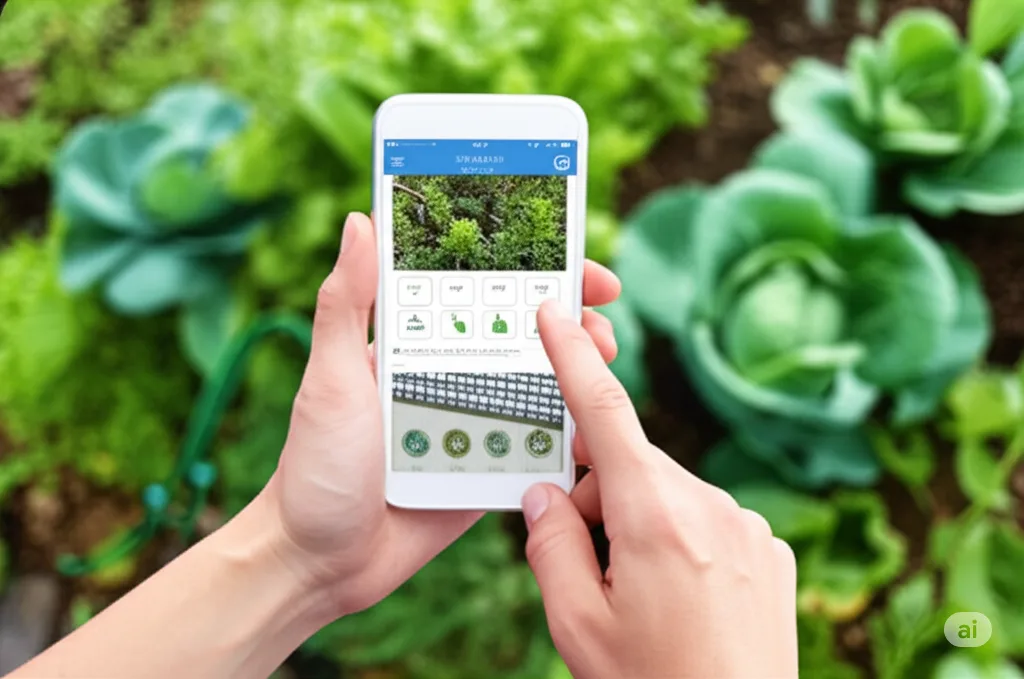
Use a garden planning app to customize your seasonal planting calendar
Conclusion
Growing your own food according to a seasonal planting calendar not only yields better results but connects you deeply with natural cycles. By understanding your hardiness zone and following appropriate planting times, you’ll maximize harvests while minimizing inputs—the essence of sustainable gardening.
Remember that this seasonal planting calendar is a starting point. Your specific microclimate, soil conditions, and yearly weather variations will ultimately determine your garden’s unique rhythm. Keep records, learn from each season, and adjust accordingly.
What will you plant this season? Share your plans in the comments below, and don’t forget to tag us in your garden progress photos on social media using #EcoDwellerGarden!
More Gardening Tips to Explore
Want to dive deeper into sustainable gardening? Check out these posts:

